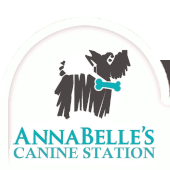Author: Dawn Archer Pizzoferrato, ABCDT; owner of Arrow Dog Training – Get Your Dog on Target! and clicker trainer and Nose Work Instructor at AnnaBelle’s Pet Station.
seek |sēk|
verb (past sought |sôt|) [trans.]
attempt to find (something): they came here to seek shelter from biting winter winds.
• attempt or desire to obtain or achieve (something): the new regime sought his extradition | [intrans.] her parents had never sought to interfere with her freedom.
• ask for (something) from someone: he sought help from the police.
• (seek someone/something out) search for and find someone or something: it’s his job to seek out new customers.
This is what most of us think of when we here the word “seek.” But what many of us don’t know is that SEEKING is a basic animal emotion that drives much of the behaviors we see in our dogs.
In her book, Animals Make Us Human, Creating The Best Life For Animals, Temple Grandin discusses the work of one of her mentors, Dr. Jaak Panksepp, a neuroscientist at Washington State University. Dr. Panksepp wrote the book, Affective Neuroscience, where he identifies and names the core emotional systems of the animal and human brain. He called these systems the “blue-ribbon emotions,” finding that well-organized behavior sequences can be generated with electrical stimulation of localized areas of the brain. So, when you stimulate the “fear” system, you get a snarling, biting animal and when you stimulate the SEEKING system of the brain, you get a animal that starts moving forward, exploring and sniffing its environment.
 These core “blue-ribbon emotions” are SEEKING, FEAR, PANIC, LUST, CARE, and PLAY. Some of these are well known, but SEEKING is probably new to most of us.
These core “blue-ribbon emotions” are SEEKING, FEAR, PANIC, LUST, CARE, and PLAY. Some of these are well known, but SEEKING is probably new to most of us.
So what exactly is SEEKING? Dr. Panksepp defines SEEKING as “the basic impulse to search, investigate, and make sense of the environment.” It’s a combination of things we usually think of as different concepts: “wanting” something good, “looking forward” to something good, and curiosity. Both Dr. Panksepp and Temple Grandin speculate that SEEKING may be a type of “master emotion.” SEEKING is about looking forward to something good, not having something good. This system is probably to blame for most of the marital infidelity in us humans, but it’s about survival in our dogs.
So, now think about your dog. Is this SEEKING “emotional system” strong in your dog? I would dare to guess that it is. Would you like to give your dog a safe outlet to practice and fulfill this emotional system? If so, there’s a new dog sport sweeping the nation that centers on your dog’s natural scenting ability and desire to SEEK good things like food or toys.
The training for this sport is simple and immediately rewarding. With “Box Games,” your dog is allowed enter a secured area with no other dogs and encouraged to SEEK, explore, and search for their favorite treat, toy or ball among mostly empty cardboard boxes. As handler, you take the back seat, only intervening to keep your dog in the designated area, while your dog does what it does best … use its nose to find food. Trainer/Helpers will work to keep your dog interested and help them learn to rely on their noses instead of their human “tool.” All interactions are positive and non-threatening. And your dog will come away happy, satisfied, and often tired.
 Dawn is an Animal Behavior College Certified Dog Trainer, an experienced Nose Work Instructor, an AKC Canine Good Citizen evaluator, and the owner of Arrow Dog Training.
Dawn is an Animal Behavior College Certified Dog Trainer, an experienced Nose Work Instructor, an AKC Canine Good Citizen evaluator, and the owner of Arrow Dog Training.
Dawn is AnnaBelle’s resident clicker training specialist and she can help you Get Your Dog on Target! Dawn uses scientifically proven “clicker training” and “free shaping” to teach your dog all the basics plus other fun, useful behaviors. She uses operant conditioning and positive reinforcement, without correction, to help you and your dog build a bond of trust and respect.
In addition to presenting Doggie Do Good clicker classes, Dawn also offers Nose Work classes, TDI® (Therapy Dog International) classes and in-home private training. Dawn’s group classes are taught at AnnaBelle’s on Tuesday and Wednesday evenings. Click here to see her complete class schedule!
![]() Follow Dawn on Twitter!Find out what’s going on in Dawn’s clicker and Nose Work classes.
Follow Dawn on Twitter!Find out what’s going on in Dawn’s clicker and Nose Work classes.
![]() Join Dawn on Facebook! Get clicker training and Nose Work updates and advice.
Join Dawn on Facebook! Get clicker training and Nose Work updates and advice.















 Clickers come in many shapes and sizes and every brand sounds different. Click the clicker near your dog. If he flinches or is frightened in any way, try a different brand. Some clickers come with different sounds such as “pings” or “chirp” that may be less intimidating to your dog. Get a wrist coil or lanyard to keep your clicker conveniently attached to you and within easy access.
Clickers come in many shapes and sizes and every brand sounds different. Click the clicker near your dog. If he flinches or is frightened in any way, try a different brand. Some clickers come with different sounds such as “pings” or “chirp” that may be less intimidating to your dog. Get a wrist coil or lanyard to keep your clicker conveniently attached to you and within easy access. 6. Practice your clicker timing
6. Practice your clicker timing  Dear Carol,
Dear Carol,
 What is Rally?
What is Rally?
